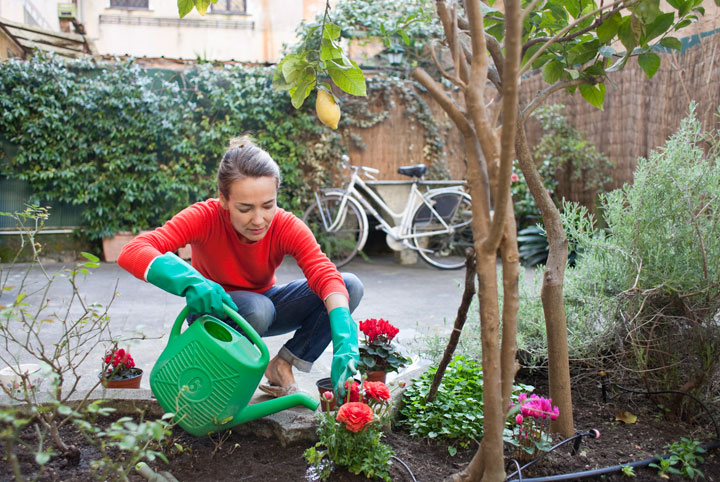
Everyone loves the spring. The snow melts, the flowers bloom, and everyone comes out of their winter hibernation. But for homeowners and landlords spring also brings a whole lot of maintenance work.
There tends to be some overlap between landlord and renter responsibilities when it comes to spring maintenance, so be sure to check the lease so you know exactly who is responsible for what. That said, even if something is not specifically your responsibility, you’ll still want to keep an eye out for anything that might be amiss.

Renters who live at the property full time may notice more issues than landlords and property managers who only visit occasionally. And vice versa-the people who own the building may want to keep an eye out for things renters might miss or ignore.
Interiors
Depending on the type of unit and building you’re in, the things that need to be done may vary, but here are a few to get you started.
- Check the basement for water damage and look for any foundation cracks. Renters, if you live in a basement apartment this task will really fall on you. While the landlord should check hallways and common areas, if you see water anywhere in your unit alert him or her immediately. The spring thaw is when it’s most likely to happen, so be on the lookout.
- Inspect around all of the windows. Look for ripped or broken screens, and check for air leakage from damaged weather stripping or caulking. Winter storms can do a lot of damage to these vulnerable areas. People living in the units will know best if there’s an air leakage problem, so renters, let your landlords know.
- Spring is a great time to clean air filters, replace furnace filters, and even vacuum the refrigerator coils. Some landlords will only do this type of maintenance work between renters, but if you’re on a long-term lease and no one has mentioned this, it’s worth asking.
- Clean the dryer vent. This will fall on the landlord and should be done at least once a year, depending on the size of the building and the number of people using it. Clogged dryer vents are a very serious fire hazard, so landlords, don’t skimp on this. And renters, if you notice that it’s taking an unusually long time to dry clothes, alert your landlord right away. This could be a sign of lint build up, which is very dangerous.
- Spring is a good time to have the chimney serviced. A lot of people do it in the fall, so sometimes you can get quicker service and a better rate if you do it in the spring.

Scott McGillivray shares his tip for spotting the perfect window to cash out on your income property.
Exteriors
Winter can really wreak havoc on buildings and the areas around them. No matter what the size of the building, look for these tell tale signs of winter damage.
- Do a perimeter check of the building’s foundation. Look for any types of cracks or damage and address problems right away. These types of issues can quickly get worse, so don’t wait.
- Check driveways, walkways, patios and porches for any damage. This could mean cracks, broken boards, loose railings or any number of other problems. As a landlord you want to make sure these issues get fixed right away. If a tenant gets hurt due to a safety issue on the property, you could be held liable.
- Clean the gutters and remove any debris that may have accumulated over the winter. With all the melting snow and rain, you want to make sure the gutters are free and clear to do their job.
- Check the downspouts to make sure they’re pointing away from the house. Do not allow water to pool anywhere around the building.
- Check the roof, looking for any loose shingles or flashing. These problems could result in leaks, so better to deal with them right away if you can.
HGTV your inbox.
By clicking "SIGN UP” you agree to receive emails from HGTV and accept Corus' Terms of Use and Corus' Privacy Policy.



